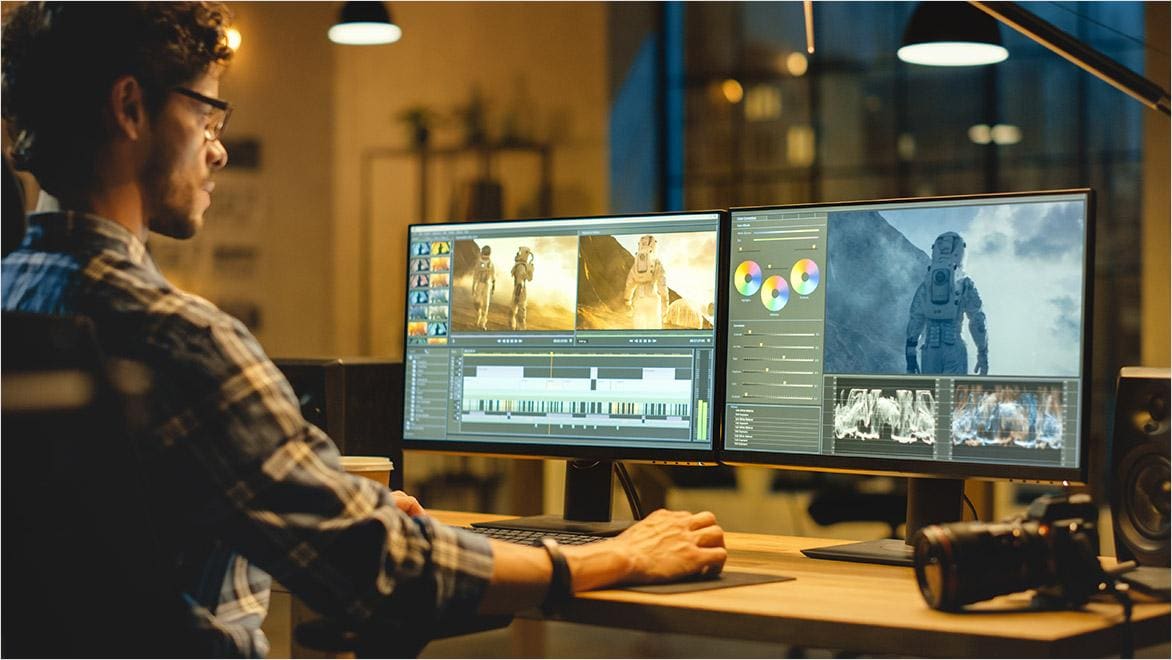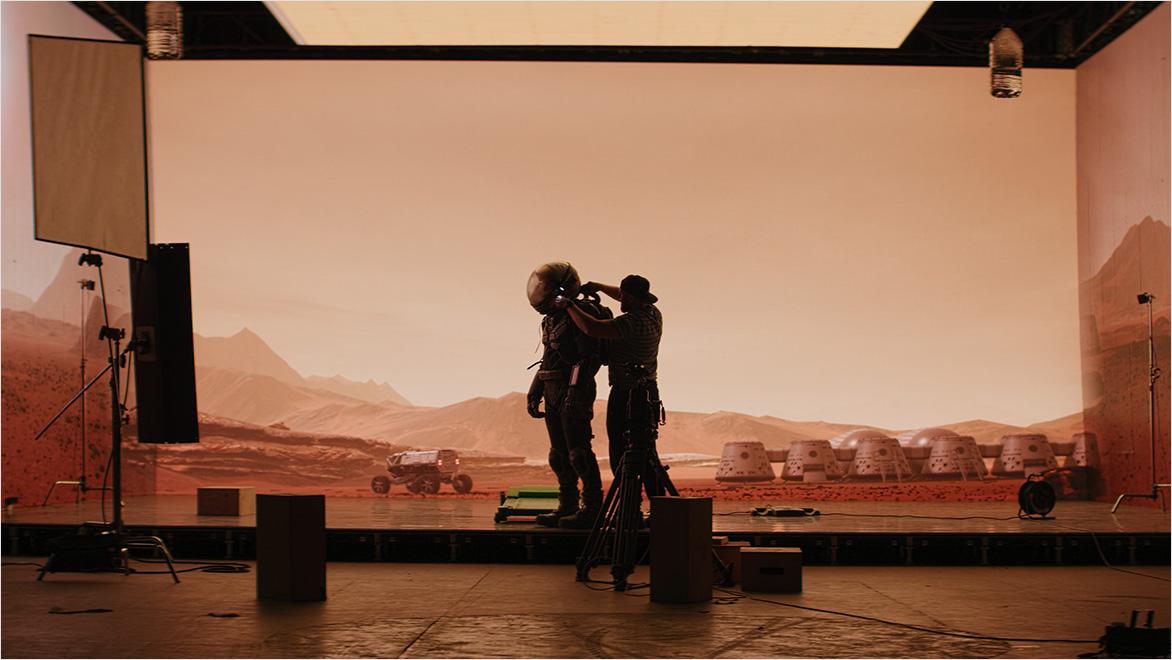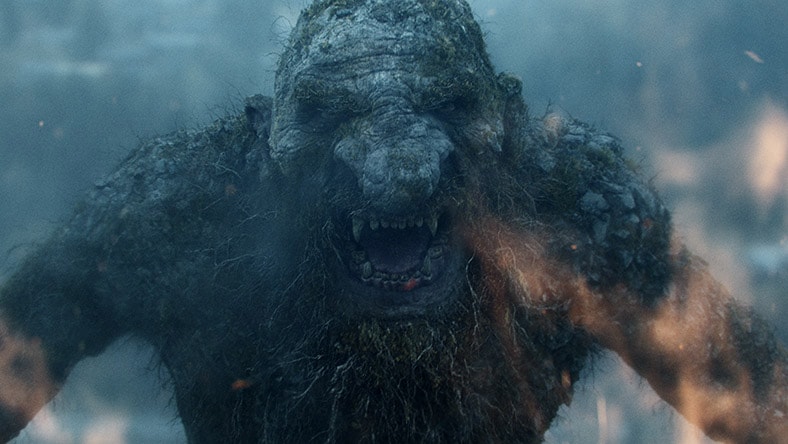& Construction

Integrated BIM tools, including Revit, AutoCAD, and Civil 3D
& Manufacturing

Professional CAD/CAM tools built on Inventor and AutoCAD
A man uses TV production software to edit a programme
Television production software encompasses a range of digital tools and applications that facilitate every stage of television content creation.
An actor gets dressed as an astronaut on a TV set
Television production involves a multi-stage process starting with the conceptualisation and pitching of ideas, followed by pre-production tasks like scriptwriting, casting and budgeting. The preparation and planning phase encompasses location scouting, costume and set design, and technical planning.
During the production phase, actual filming occurs under the direction of the filmmaker. Post-production involves video and sound editing, colour grading, and the addition of visual effects or animation (US site).
The finalised content undergoes quality control before distribution through various channels, such as streaming services and TV networks.
What can post-production software do? How is it used and why?
Post-production software is used in television and film production (US site) to refine raw video footage and create a polished final product. Video editing tools enable precise arrangement of footage for storytelling and pacing and audio editing enhances dialogue clarity and adds sound effects or music for an immersive experience. Colour grading adjusts visual aesthetics for consistency and mood. Visual effects (US Site) and animation tools add realistic CG characters, environments and effects (that would have been impractical or impossible to shoot) to live-action footage. Transcoding and compression optimise content for different platforms. Quality control ensures a polished, error-free result, and collaboration tools aid efficient teamwork.
How is TV production software used for visual effects and animation?
A variety of post-production software is used to create visual effects and animation for TV. 3D modelling and simulation tools are used to create realistic CG elements and effects that are then integrated with live-action footage through tasks like compositing (US site). Animation tools aid in bringing CG characters to life, using keyframing, character rigging and motion capture. Rendering capabilities allow for adjustments in lighting and shading in scenes. Collaboration tools for post-production also ensure smooth communication and interoperability among all stages of the production pipeline.
From scriptwriting to distribution, TV production software empowers teams and elevates every aspect of a production workflow. The right combination of digital tools can streamline processes, enhance collaboration and ensure the highest quality in every frame.
TV production software helps streamline the production process by automating tasks, managing timelines, scheduling and workflows, and improving overall efficiency. This leads to faster project completion and better use of resources.
Production management tools provide platforms for effective collaboration and communication among team members across continents and time zones. Features like real-time updates, file sharing and collaborative editing contribute to a smoother production workflow.
TV production involves a large volume of media assets, including video footage, audio files, graphics and more. Asset management solutions help organise and manage these assets, making it easier for teams to access and use the necessary materials.
Budgeting features within production management software help producers track expenses, allocate resources efficiently and control costs. This is crucial to stay within budget constraints and ensure the financial success of a production.
Dedicated software for scriptwriting and storyboarding gives writers and directors tools to develop and visualise their ideas. These tools often include formatting assistance, version tracking and collaboration features.
Post-production software enhances the quality of the final product through powerful animation, visual effects and video editing tools. VFX artists can add stunning effects to live-action scenes and editors can cut, trim and improve visual and auditory elements to create a polished and engaging final product.
UNTOLD STUDIOS
Cloud-based creative studio uses Autodesk’s Design and Make Platform to scale with the future in mind.
GHOST VFX
Emmy-winning visual effects studio uses Maya to bring a gigantic Netflix protagonist to life.
Image courtesy of Netflix
ARTFX MONTPELLIER
Digital art students create lifelike jungle for an award-winning animated short with Maya and Arnold.
Image courtesy of ARTFX Montpellier
See how Amazon Studios pushed the boundaries of episodic storytelling with Flow Production Tracking (formerly ShotGrid) and Flow Capture (formerly Moxion).
Learn how Animal Logic streamlined its pipeline and completed complex productions with Flow Production Tracking.
See how Image Engine used a custom Flow Production Tracking pipeline to deliver VFX for Venom: Let There Be Carnage.
The TV production process comprises several key stages, beginning with conceptualising and pitching ideas during development. Pre-production stages include scriptwriting, casting and detailed planning, including location scouting and technical considerations. The production phase, or principal photography, is the actual filming guided by the director's vision. Post-production follows, incorporating video and sound editing, colour grading, and the addition of visual effects (US Site) and animations, all subject to quality control. The distribution stage involves formatting content for various channels, while marketing and promotion activities precede broadcasting or streaming. The post-release phase includes audience feedback analysis, influencing decisions on the show’s future.
TV production software serves as a versatile toolset encompassing various functions crucial for creating and enhancing television content. It is used for scriptwriting, storyboarding and pre-production planning, streamlining tasks such as casting and location management. Production management software promotes team collaboration and communication, efficiently coordinating workflows and tasks. Asset-management capabilities enables studios to organise and provide easy access to video footage, audio files and graphics. Visual effects, animation and editing software brings everything together, combining live-action footage with CG elements to create visually compelling content, while audio editing and sound design ensure high-quality sound.




